
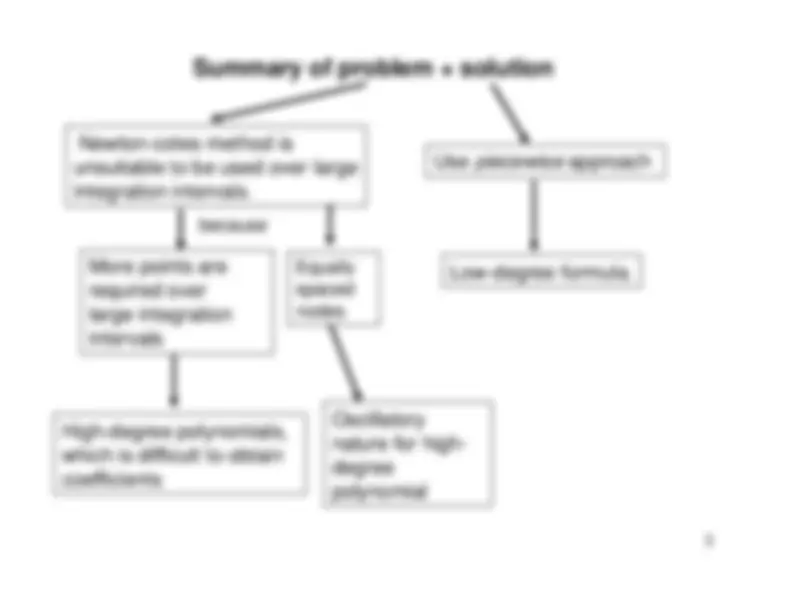
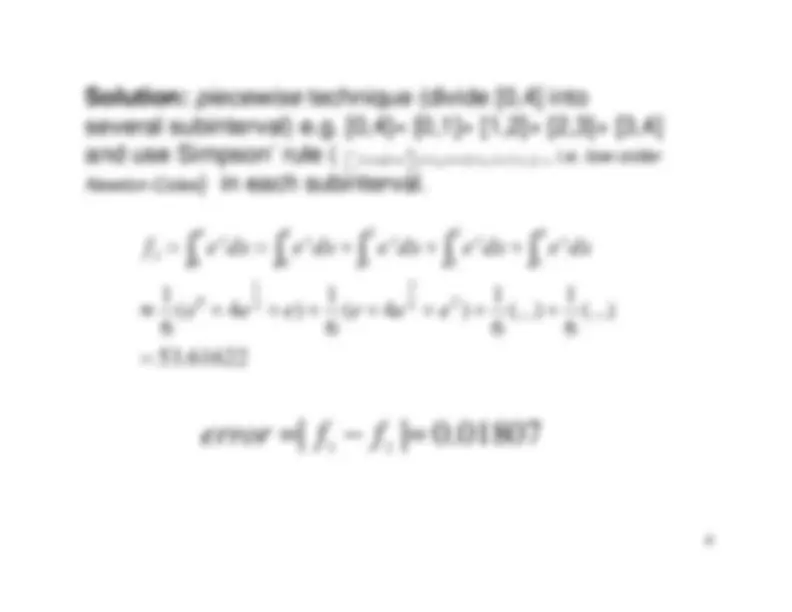
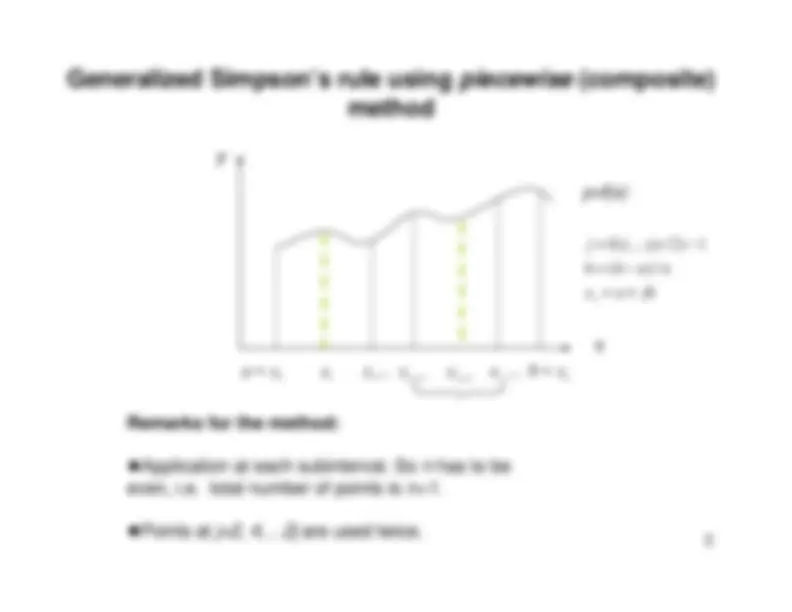
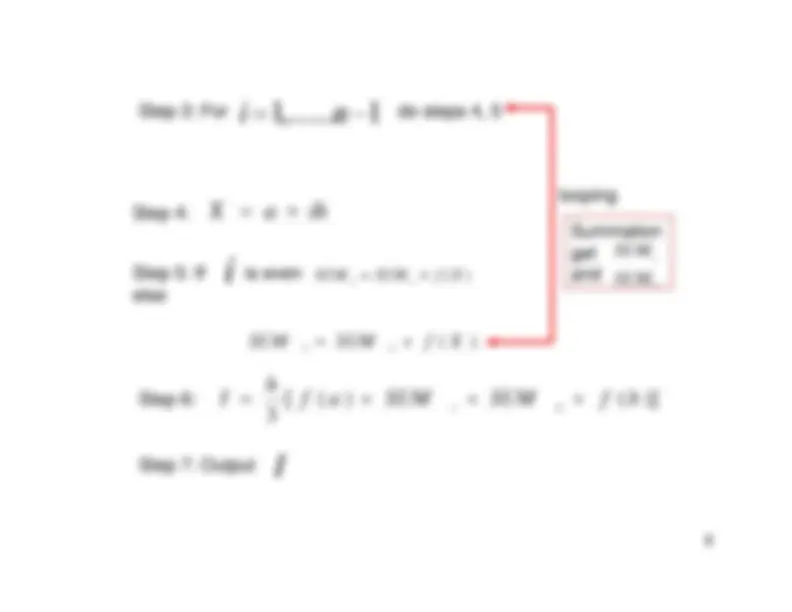
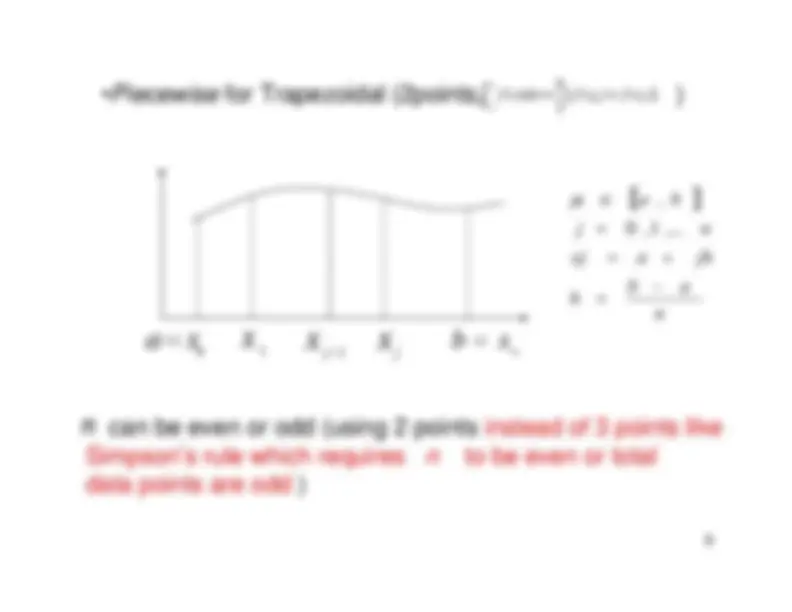
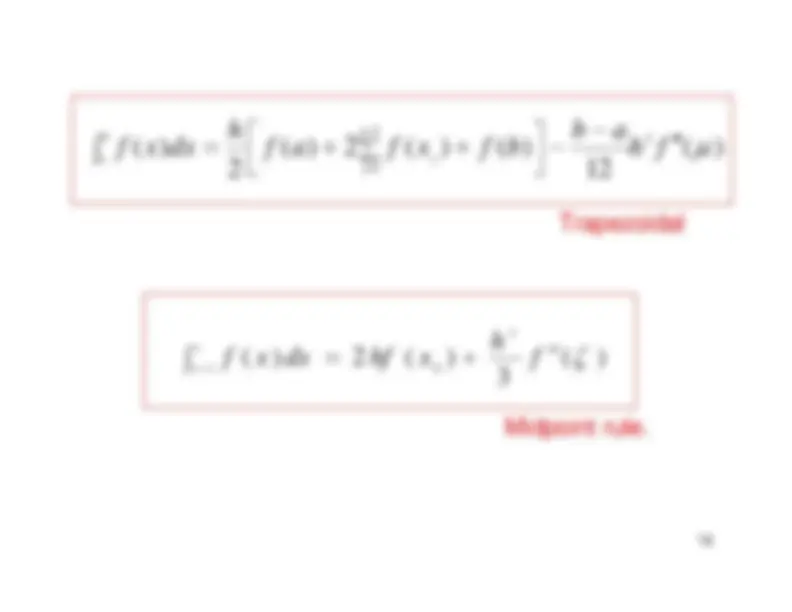
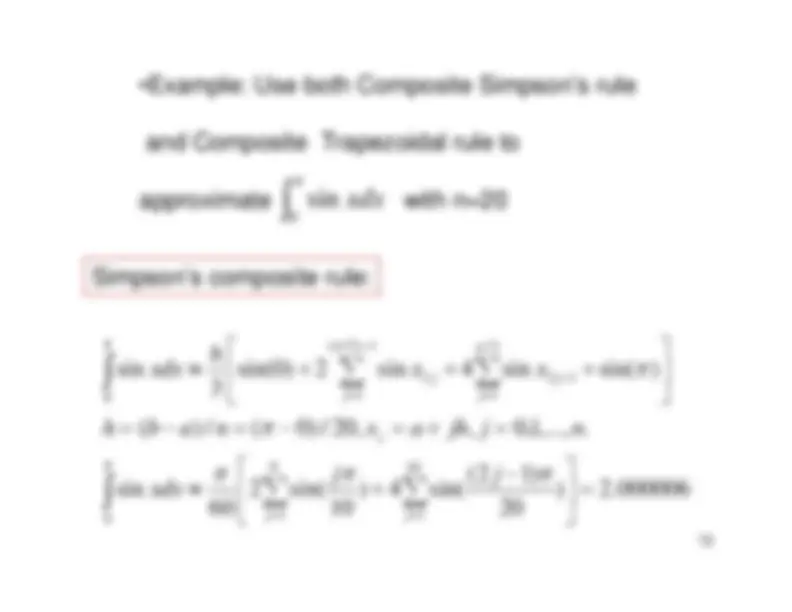
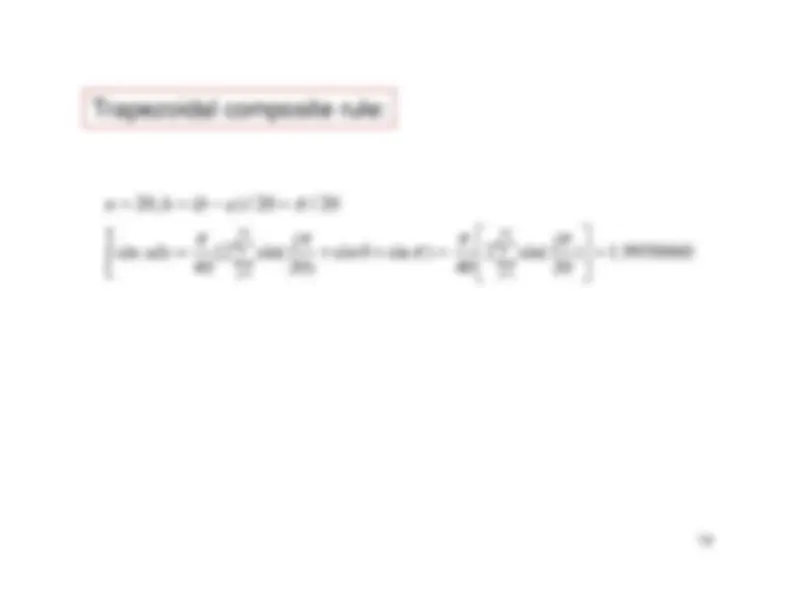


Study with the several resources on Docsity

Earn points by helping other students or get them with a premium plan


Prepare for your exams
Study with the several resources on Docsity

Earn points to download
Earn points by helping other students or get them with a premium plan
Community
Ask the community for help and clear up your study doubts
Discover the best universities in your country according to Docsity users
Free resources
Download our free guides on studying techniques, anxiety management strategies, and thesis advice from Docsity tutors
The challenges of using Newton-Cotes methods, specifically Simpson's Rule, for large integration intervals. The text suggests a piecewise approach, dividing the interval into subintervals and applying Simpson's Rule to each one. The document also introduces the concept of Generalized Simpson's Rule and provides an algorithm for its implementation.
Typology: Slides
1 / 14

This page cannot be seen from the preview
Don't miss anything!









-^
(^76958). 56 )
4
2 ( 3
4 2
0
(^40) 1
=
∫^
=
=^
e e
e
dx e
f^
x
(^59819). 53 0
4
(^40)
2
=
−
=
∫ =^
e
e
dx e
f^
x
(^17143). 3 |
|^
2 1
=
−
=
f f
error
)] ( )( 4 ) ([ 3 )(
2 1 0
(^20)
xf xf
xf h dxx x f x^
≈
Solution:
piecewise
technique (divide [0,4] into
several subinterval) e.g. [0,4]= [0,1]+ [1,2]+ [2,3]+ [3,4]and use Simpson’ rule (
,^ i.e. low-order
Newton-Cotes
) in each subinterval. (^61622). 53
2 3 2
1 2 4 0 0
(^10)
(^21)
(^32)
(^43)
=^ ∫
∫^
∫^
∫^
∫ e e e e e e
dx e
dx e
dx e
dx e
dx e
f^
x
x
x
x
x
(^01807). 0 |
|^
2 3
=
−
=^
f f
error
)]( )( (^4) ) ([ 3 )(
2 1 0
(^20)
xf xf xf h dxx x fx^
≈ ∫
Generalized Simpson’s rule using
piecewise
(composite)
method
y
x^0 a^ =
x^^1
... x 2
(^22) − j x^
(^12) − j x^
... x 2 j
xn b^ =
y=f(x)^ x
jh a x
n a b h
n
j j^
=
−
=
/) (
(^1) ) (^2) / ,....( (^1) , 0
Remarks for the method: zApplication at each subinterval. So
n^ has to be
even, i.e. total number of points is
n+
.
zPoints at
j=2, 4,…2j
are used twice.
) ( 2 90 ) (^
4
5
μ f n h
f E^
× − =^
) (
180
)
(^
4 4
μ f h a b^
− − =
ab n
h^
) (^ − =
Algorithm (for Composite Simpson’s Rule) Input:Output:
)] ( ) ( 4 ) ( 2 ) (
[ 3
2 1
1 2
12 1
2
0
n
n j^
j
n j^
j^
x f x f x f x f h
I^
∑
∑
=^
=^
−
− =
n b a^
, ,^
e SUM
0 SUM
Step 1: set
Step 2:
0 = e
SUM
0 = 0
SUM
initialize
Step 3: For
do steps 4, 5
Summationgetand
0 SUM SUM
e
Step 4:
ih a X^
1
,....... 1
−
=^
n
i
Step 5: If
is even
else
i^
) (^ Xf
SUM SUM
e e^
=
) ( 0
0
X f
SUM
SUM
=
looping
Step 6:
)] (
) ( [ 3
0
b f
SUM
SUM a f h I^
e^
=
Step 7: Output
I
2
1 1
μ
n j^
j^
− =
) ( 3 ) ( 2 ) (
3
1
0
f h
x hf
dx x f x x^
′′
∫^
=
−
Midpoint rule.
Trapezoidal
(^1) − =^ xa
x^^0
1 x^^2 − j
j x^2
1 x^^2 + j
(^1) +
xn
open interval
•Example: Use both Composite Simpson’s ruleand Composite Trapezoidal rule toapproximate
with n=
π ∫ 0
Simpson’s composite rule:
sin( 4 ) 10 sin( 2 60
sin
sin(
sin 4
sin
2 ) 0 sin( 3
sin
9 1
10 1
0 0
(^1) ) (^2) / (
1
(^2) / 1
1 2
2
∑
∑
∫^ ∫
∑
∑
=^
= − =
=
−
j^
j j n j
n j
j
j
j
j
xdx
n
j jh a x n a b h
x
x
h xdx
π
π
π
π
π
π π
Trapezoidal composite rule:
(^9958860). 1 ) 20 sin( 2 40 ) sin 0 sin ) 20 sin( (^2) [ 40
sin
(^20) /
(^20) /)
( , 20
19 1
0
19 1
⎤^ =⎥ ⎦
≈
=
=
∑
∫^
∑
=
=^
j
j
j
j
xdx
a b h n
π
π π
π
π
π
π